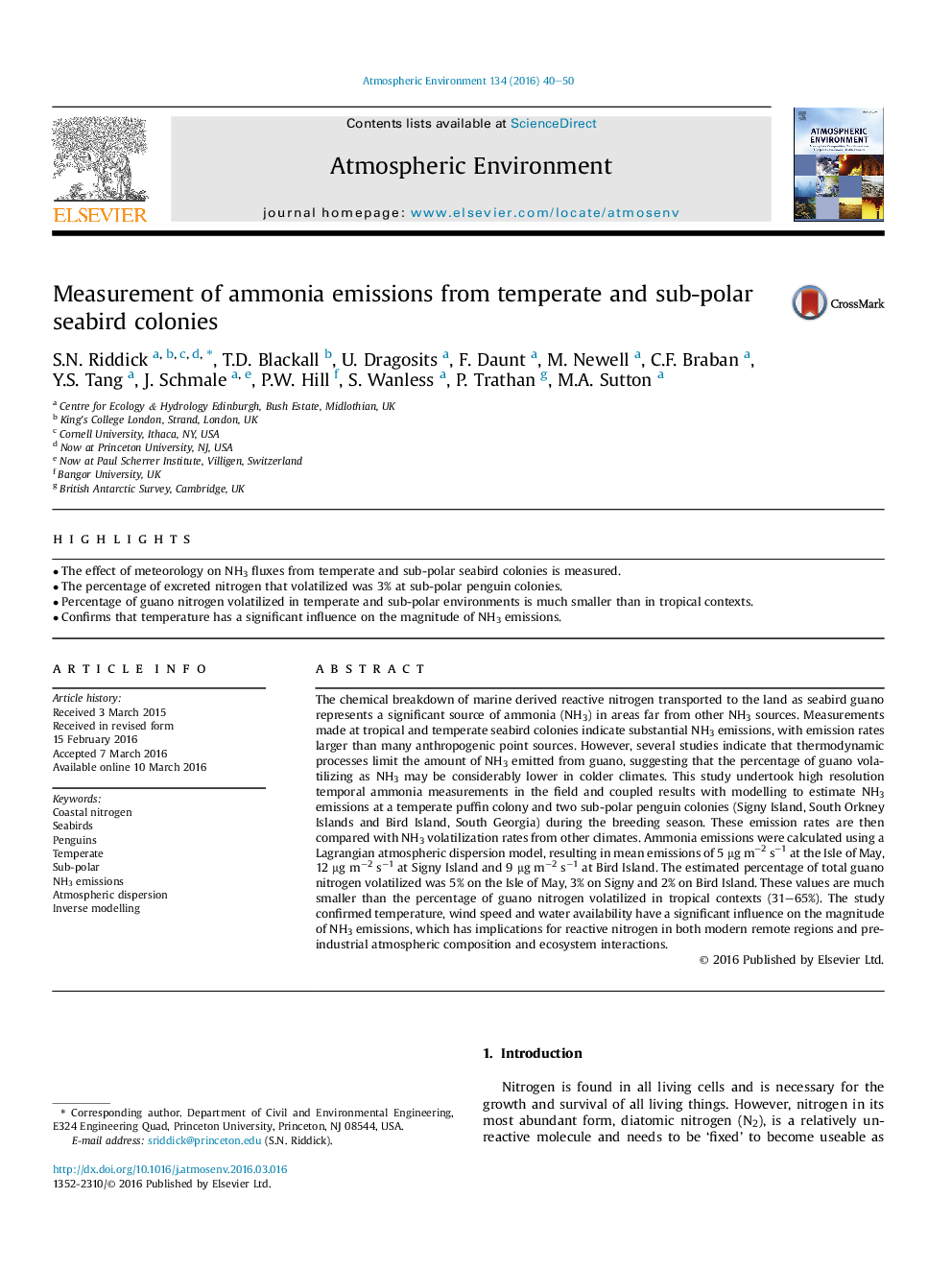| کد مقاله | کد نشریه | سال انتشار | مقاله انگلیسی | نسخه تمام متن |
|---|---|---|---|---|
| 6336575 | 1620340 | 2016 | 11 صفحه PDF | دانلود رایگان |
- The effect of meteorology on NH3 fluxes from temperate and sub-polar seabird colonies is measured.
- The percentage of excreted nitrogen that volatilized was 3% at sub-polar penguin colonies.
- Percentage of guano nitrogen volatilized in temperate and sub-polar environments is much smaller than in tropical contexts.
- Confirms that temperature has a significant influence on the magnitude of NH3 emissions.
The chemical breakdown of marine derived reactive nitrogen transported to the land as seabird guano represents a significant source of ammonia (NH3) in areas far from other NH3 sources. Measurements made at tropical and temperate seabird colonies indicate substantial NH3 emissions, with emission rates larger than many anthropogenic point sources. However, several studies indicate that thermodynamic processes limit the amount of NH3 emitted from guano, suggesting that the percentage of guano volatilizing as NH3 may be considerably lower in colder climates. This study undertook high resolution temporal ammonia measurements in the field and coupled results with modelling to estimate NH3 emissions at a temperate puffin colony and two sub-polar penguin colonies (Signy Island, South Orkney Islands and Bird Island, South Georgia) during the breeding season. These emission rates are then compared with NH3 volatilization rates from other climates. Ammonia emissions were calculated using a Lagrangian atmospheric dispersion model, resulting in mean emissions of 5 μg mâ2 sâ1 at the Isle of May, 12 μg mâ2 sâ1 at Signy Island and 9 μg mâ2 sâ1 at Bird Island. The estimated percentage of total guano nitrogen volatilized was 5% on the Isle of May, 3% on Signy and 2% on Bird Island. These values are much smaller than the percentage of guano nitrogen volatilized in tropical contexts (31-65%). The study confirmed temperature, wind speed and water availability have a significant influence on the magnitude of NH3 emissions, which has implications for reactive nitrogen in both modern remote regions and pre-industrial atmospheric composition and ecosystem interactions.
Journal: Atmospheric Environment - Volume 134, June 2016, Pages 40-50
